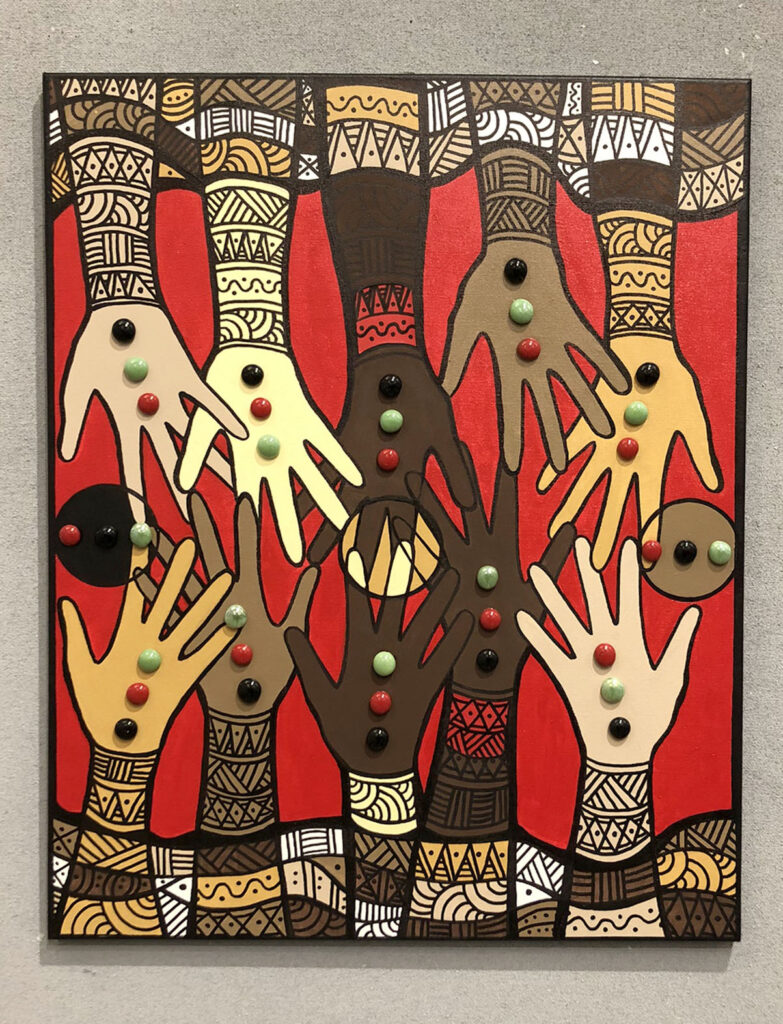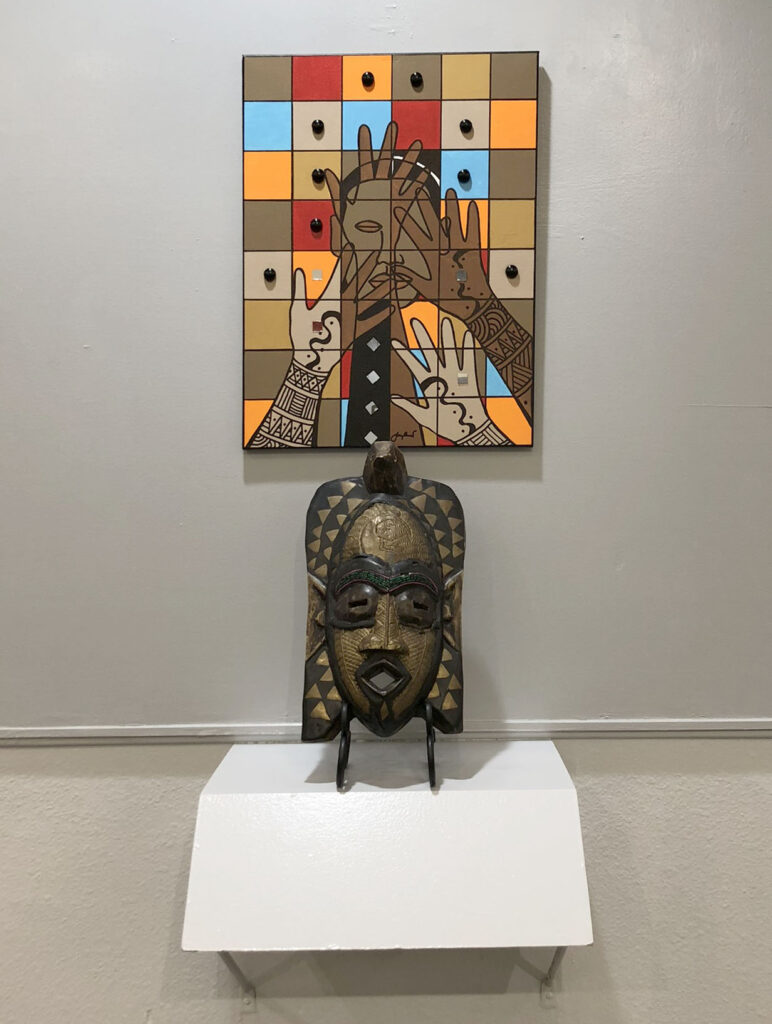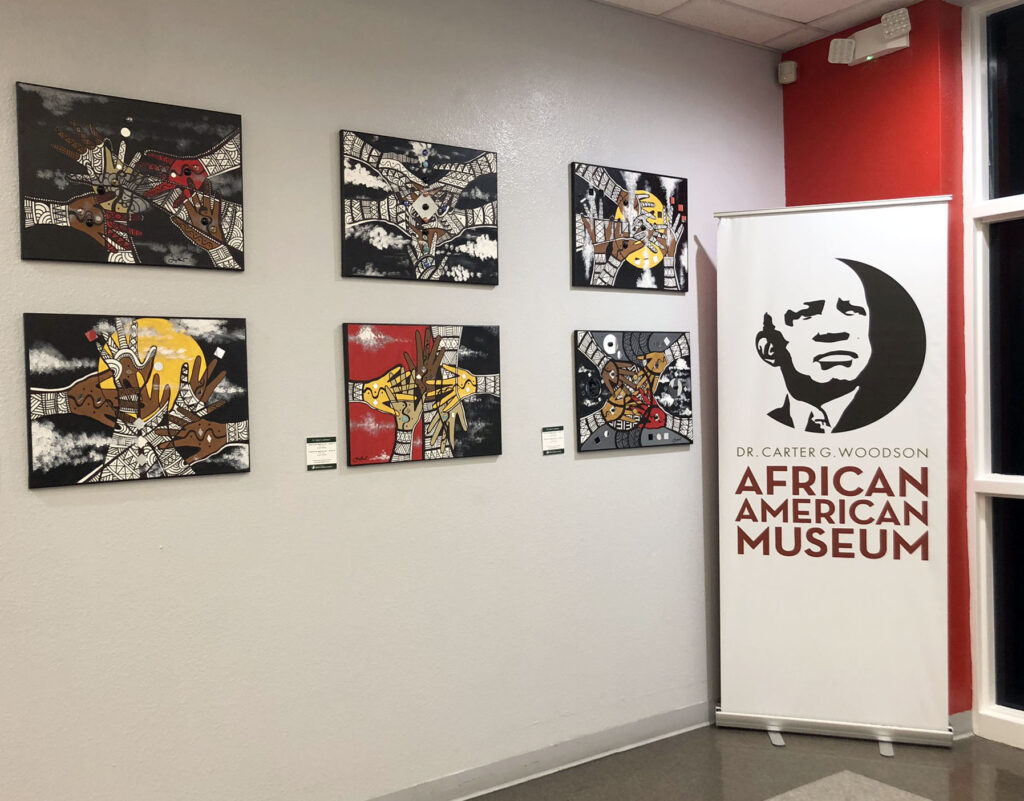
Mary Ann Carroll (1940-2019), “Untitled (Backcountry Twilight)”, n.d., Oil on Masonite board

Harold Newton (1934-1991), “Untitled (Painting of the Indian River)”, c. 1958, Oil on Upson board; Alfred Hair (1941-1970), “Untitled (Marshland with palm), c. 1958, Oil on Upson board

James Gibson (1938-2017) “Untitled (Moonlit palms)”, n.d., Oil on Upson board
In early 2021, Tampa Museum of Art presented the work of Florida’s famous Highwaymen painters in the exhibition Living Color: The Art of the Highwaymen.
From the museum-
The Highwaymen are a group of African American artists celebrated for their distinctive paintings of Florida’s natural environment. Working in and around the Fort Pierce area beginning in the 1950s, these self-taught artists depicted the state’s scenic coastline and wild backcountry, often in dazzling combinations of color and tone. Brilliant tropical sunsets, windblown palms, towering sunlit clouds, and blooming poinciana trees are among the many subjects that have become iconic images of Florida in part because of the paintings that the Highwaymen created. In the state’s postwar boom years their paintings found an enthusiastic audience among a growing population of new residents and visitors. Unrecognized by the region’s art establishment of galleries and museums, the Highwaymen by necessity catered directly to their patrons, selling their paintings door-to-door along such thoroughfares as Route 1. It was from this practice that the name “Highwaymen” was later coined.
The popularity of Highwaymen paintings waned in the 1980s as the vision of Florida was reimagined by an ever-increasing population and once-pristine landscapes were lost to development. Then in the mid-1990s a new generation of collectors, with fresh eyes, rediscovered the paintings and began to assemble significant collections. These collectors saw the art of the Highwaymen as an important artistic legacy and together with several writers, scholars, and enthusiasts began the process of establishing the historical context and reevaluation of their work. Books and articles followed, bringing a new level of recognition for the achievements of these artists and, with that, growing popular acclaim. The contribution of the Highwaymen to the cultural life of Florida was formally recognized in 2004 when the group of 26 artists was inducted into the Florida Artists Hall of Fame.
Living Color: The Art of the Highwaymen brings together 60 paintings by a core group of the Highwaymen including Al Black, Mary Ann Carroll, Willie Daniels, Johnny Daniels, James Gibson, Alfred Hair, Roy McLendon, Harold Newton, Sam Newton, Willie Reagan, and Livingston Roberts.
Focusing on work produced from the 1950s to the 1980s, the exhibition is an in-depth examination of the group’s initial period of success when their groundbreaking style of fast painting was being developed. Fast painting is a hallmark and essential innovation of the Highwaymen. Facing limitations imposed by the racial prejudice of their time, they had little or no access to formal training or to conventional art markets. To overcome these obstacles, they produced large numbers of works which could be sold at very affordable prices. Some estimates of the group’s overall production during their heyday exceed 200,000 paintings, with certain artists creating dozens of paintings per day. Their creative response to the racism they confronted resulted in an original artistic practice.
Opening at The Woodson African American Museum of Florida in St. Pete this Saturday, 9/9/23, is Florida Highwaymen: The Next Generation – The Legacy Continues, an exhibition of work by Ray McLendon, son of Highwayman Roy McLendon, who creates Florida landscapes in the same iconic style his father used.



